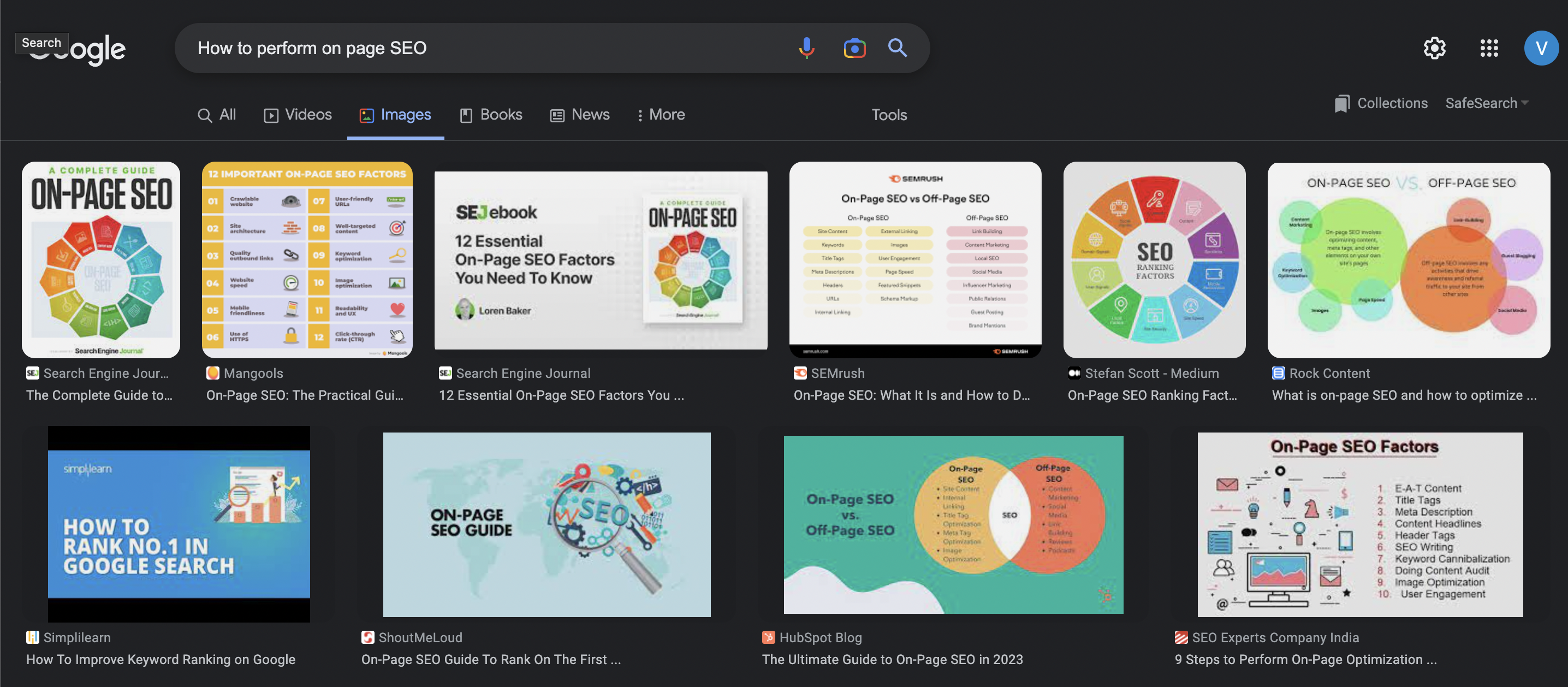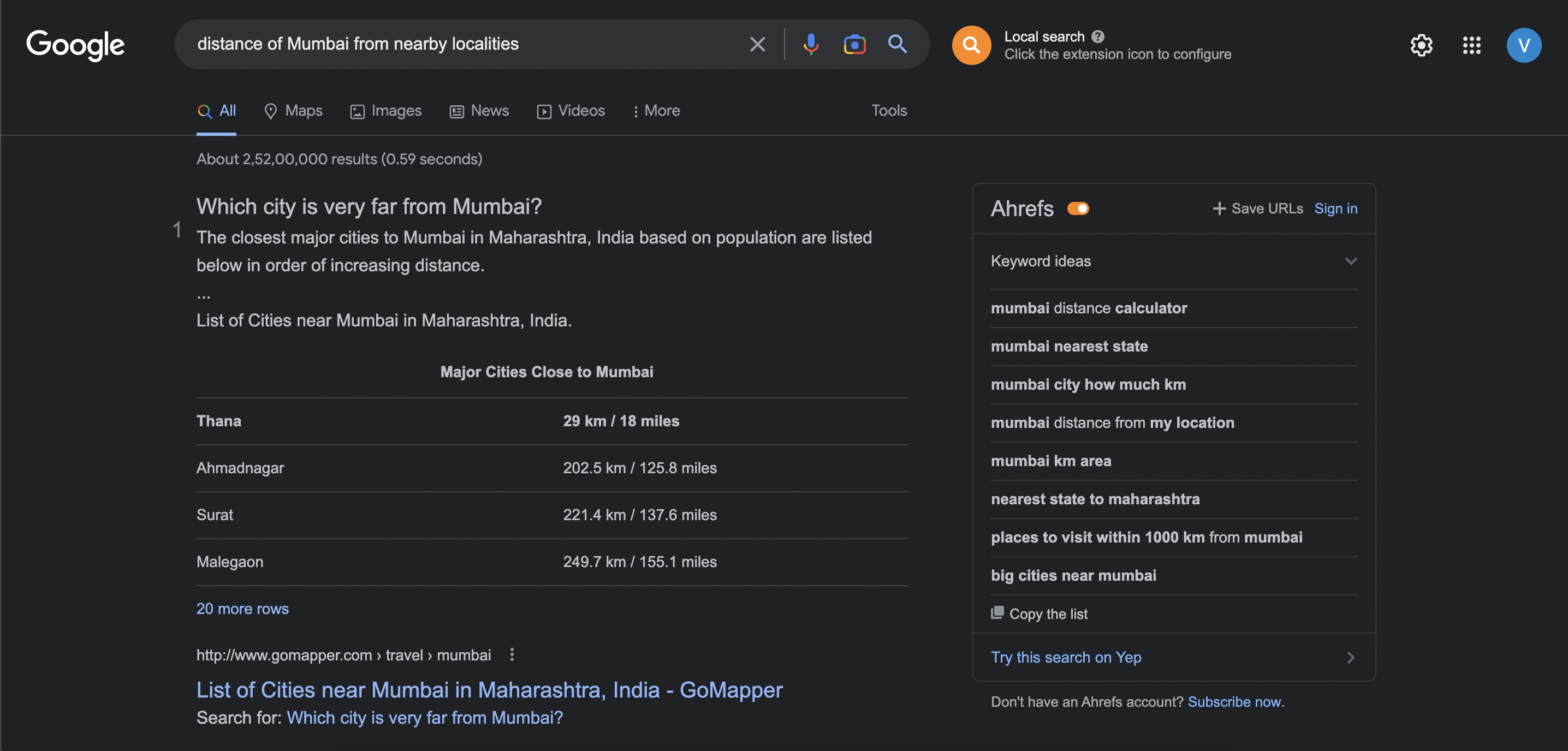Last updated on October 5th, 2023
Have you been considering setting up a new website for your business and creating content for it? Chances are, you’re feeling a little flummoxed about how to go about optimizing your content.
While it might seem a little overwhelming at the very outset, SEO is all about understanding the basics of Google’s algorithm and your user’s needs.
After all, SEO content writing is the process of creating content in a manner that aims to answer users’ search queries while ranking on the first page of Google’s results page. To that end, this guide will dive into five crucial SEO content writing best practices that you must keep in mind for the best results.
Mastering SEO Content Writing Best Practices: 5 Proven Tips (Tired & Tested)
These five tips can be pivotal to your content ranking higher on Google and increasing your website’s traffic
1. Understanding Search Engine Algorithms
Google’s algorithm is always changing and being updated; understanding these changes is key to ranking your content on the first page. It ensures you get maximum visibility, which in turn leads to higher traffic and conversions.
If you look back to 2022, Google introduced several updates to its algorithm, all with the intent of ensuring that brands make their content increasingly human-readable and that websites that rank do so on the basis of their ability to meet the user’s search intent.
Apart from ensuring you cater to the requirements of Google updates, making use of the right keywords is another crucial aspect to think about when considering how to write SEO content writing.
The landscape has changed quite a bit recently, with Google recognizing and penalizing content spammed with keywords. Having said that, businesses must use the most lucrative keywords within their niche to stand the highest chances of ranking.
For instance, if your website sells auto spare parts, trying to spam your content with keywords about second-hand cars won’t help as Google now heavily emphasizes topical relevance and expertise.
There are several other factors that Google also considers when ranking your website:
- The website’s mobile-friendliness.
- The use of external links to authoritative websites
- Your website’s internal linking structure
- On-page optimization—let’s look at this next.
2. Optimizing On-Page Elements
Optimizing on-page elements is crucial to ensuring your content stands the highest chance of ranking on Google’s first results page. These on-page elements include title tags, meta descriptions, and header tags, among others.
The meta title and the meta description are the first elements users see when they’re presented with the results page. When they on your link, your header is the first element users see as the webpage opens up.
So, these need to be given a great deal of attention as they can mean the difference between a user who clicks on your link and one who chooses to ignore yours for that of a competitor.
Ideally, your meta title and description should have an emotive quality or a hook that compels a user to click on your website’s link. Here’s an example of two meta descriptions for the query “What is SEO?” You’ll clearly see which one’s more likely to draw the user’s attention to itself:
“What is SEO? How can SEO help your website rank higher on Google’s results page? Find the answer to these questions in our detailed guide.”
“The various updates to Google’s algorithm in 2022 show how the SEO landscape is changing. It’s become ever so important that brands and businesses…”
As you can see, the first bio answers the user’s query, while the second is vague and most likely automatically chosen by Google due to the lack of a dedicated meta description provided by the business.
So, here are a few tips to help you create compelling meta descriptions:
- Always use active voice
- Make the tone actionable
- Include a call to action. For example, “Master the art of writing well-optimized content on your website with these tips…”
- Make sure to use the primary keyword.
3. Creating Quality Content
To no one’s surprise, another aspect that businesses must place at the top of their priority list in 2023 when creating SEO content for the web is quality.
The word ‘quality’ in itself can be vague, but it takes into consideration several aspects:
- Writers must ensure they’re creating content for human beings and not search engines. One way of doing this is by not engaging in keyword stuffing.
- Your content must offer a depth of knowledge and not be shallow.
Google is bound to pay serious attention to websites that offer more value to their users and will rank them higher than those that don’t provide comprehensive answers to users’ queries.
An effective way of knowing what information to include is to analyze your competitors to see if they’ve missed out on something.
Content must be written by experienced writers, as you’re expected to see an increased emphasis on the author’s and website’s authority. A good author bio and links to their social media accounts can also go a long way in building your website’s authority.
At Wittypen, we ensure the content we deliver to our clients offers the depth readers look for, helping build your brand’s authority further. We capitalize on our large pool of highly experienced writers and match your brand with the most experienced writers in the industry so you receive content that’s well-written, well-optimized and offers immense value.

Here’s a glance at how our content creation process works:
- We get our clients’ content and SEO requirements.
- We perform keyword research if needed for SEO content writing and content briefs for our writers.
- We outsource your content to the best writers with experience in your niche.
- Once the content is drafted, we edit it for language, grammar, and flow and ensure it’s been appropriately optimized before delivering it to our clients.
4. Adding Visual Content
Visual content in the form of high-quality images and videos will be crucial elements for your website in 2023. However, that’s just the tip of the iceberg.
Ensure that these visual elements are optimized to not affect your page loading speed while contributing to your page’s ranking.
Plus, with platforms like TikTok and Instagram being immensely popular, the importance of visual search is on a steady rise as Google works to keep up with these platforms. So, you’ll have to ensure you incorporate high-quality images and video into your content while maintaining its relevance.
A good example of how important image SEO is can be seen from this results page:
 All the results here are from websites that have made good use of images while optimizing them to ensure the images themselves rank well.
All the results here are from websites that have made good use of images while optimizing them to ensure the images themselves rank well.
Additionally, using the right descriptive alt tags is crucial to ensure your website’s visual elements are tailored to be accessible to users with disabilities.
All these elements make your website more appealing and easier to crawl, significantly helping your search engine rankings.
5. Tailoring Your Content for Google’s Featured Snippets
Optimizing your content for Google’s Featured Snippets or answer box is among the best ways of ensuring your content ranks right at the top when writing web content for SEO.
The simplest way to do this is to draft your content to answer question-like keywords, i.e., how to, what is, etc. Doing so can help Google’s crawlers identify your content as the most valuable solution for the user’s search intent and highlight it in the answer box.
While there are several ways to optimize your content for the answer box, here are some key details to keep in mind:
- Ensure you directly answer the user query with no fluff whatsoever.
- Ensure your page has a strong backlink profile.
- Make the content readable and easy to understand.
Featured snippets can be optimized in different formats, such as lists, tables, paragraphs, and videos. Here are a few examples of the same:



Taking care of these aspects can go a long way in increasing the traffic on your website, as yours will be the first result a user sees when they search for that specific keyword.
On-Page SEO Checklist You Must Consider For SEO Content Writing
To ensure your content ranks on the first page and give it the best chance of benefitting from increased traffic, here’s a handy on-page SEO checklist you can run through:
- Keyword Research – Knowing which set of keywords you’re targeting in your content is key to creating the structure of your content in the first place—this includes LSI keywords. You can figure out which keywords to incorporate using a keyword research tool like Ahrefs.
- Site Speed –Ensure faster loading times by compressing images, deleting unused plugins, and reducing the number of redirects, among other methods.
- Update Outdated Content – Consistently creating new content can be challenging. An easy way to make big SEO wins is to freshen up the existing and outdated content on your website.
- Fixing Title Tags – Since title tags tell Google what your page is about, ensuring that they aren’t missing, duplicate, or longer than 60 characters can go a long way in helping your content rank better.
- External Links – Remember to use at least 5-8 external links pointing to authoritative sources. When linking internally, however, use keywords in your anchors.
Wrapping Up
SEO content writing doesn’t have to be rocket science; you just need to take care of several aspects that contribute to your page’s ranking in their own ways.
The overarching goal must be to tick as many boxes as possible, giving your content a fighting chance of ranking on the first page. Take the process step-by-step—this can help you understand the importance of each element better.
No matter what you’re creating—website content, a blog, pillar pages, or thought leadership posts—each of the tips mentioned above can go a long way in improving the quality of your content and improving its rankings. Always remember to aim for quality, and the rest will fall into place.

FAQs
What Is SEO Content Writing and How Does It Differ From Regular Writing?
The key difference between SEO content writing and regular writing is that the former is written for both the search engine and users by optimizing it for various ranking factors.
How Do I Optimize My Content For Search Engines?
You can optimize your content for search engines by conducting thorough keyword research and using the right ones strategically, making your content deep and authoritative, using high-quality, relevant images, and more.
What Are The Most Important On-Page SEO Factors To Consider When Writing?
The most important on-page tips for SEO content writing are the use of the right keywords, their placement in the content, the overall content quality, titles and title tags, and the use of relevant images.
How Can I Make Sure My Content Is Unique And Valuable To Readers?
Creating unique content for your users depends on lots of planning, competitor analysis, keyword research, and the various aspects of on-page SEO, like optimizing images, meta and title tags, and improving your website’s speed. Most of all, you must ensure your content offers depth and value.
How Often Should I Be Updating My Website’s Content For SEO Purposes?
While several factors influence how often you can update your website, such as the workforce available to do so, you should ideally update your website as often as needed. This could be to improve it, create fresh content, or tailor it to updates in Google’s algorithm.
What Are Some Best Practices For Incorporating Keywords Into My Content?
When using keywords to write SEO-friendly content, you must:
- Answer long-tail “how to” or “what is” keywords for Featured Snippets
- Use the right keywords based on search intent
- Place the keywords in all the right places (title tags, alt tags, headings)
- Avoid overstuffing keywords in the body.









